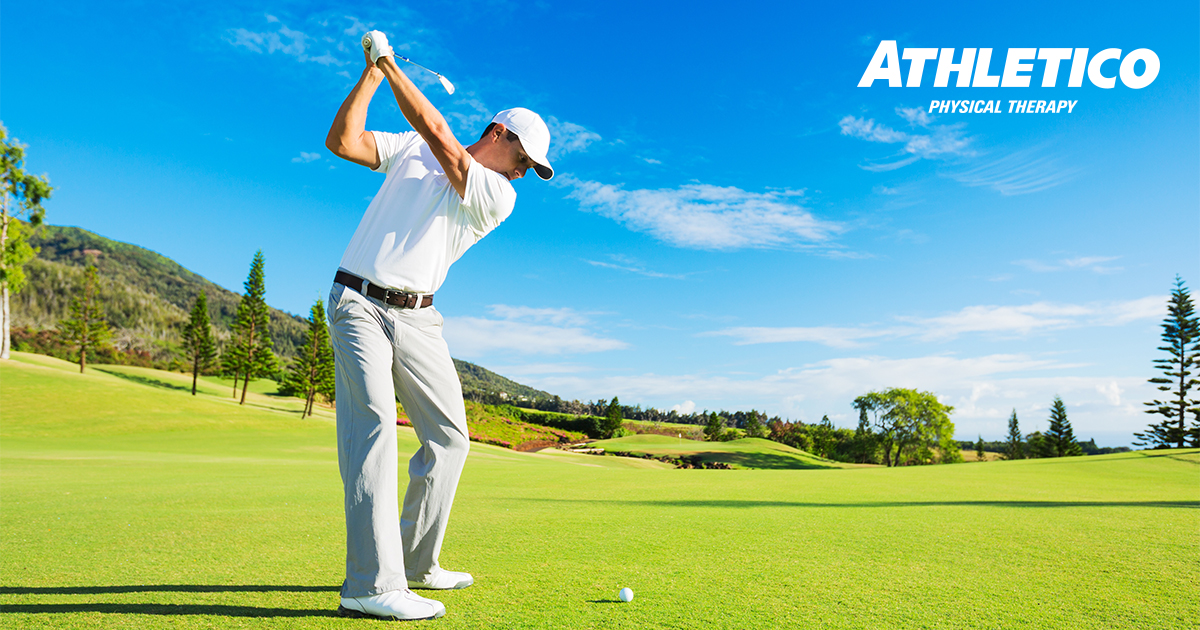Golf is often viewed as a low-impact, relaxing outdoor sport. When playing golf, our bodies don’t experience the same stress as playing basketball or running a marathon. Having said that, every sport carries a risk of injury, and golf is no exception. Golf-related injuries can ruin a golf season for both amateurs and professionals. What many people may not realize, however, is that physical therapists are trained to help you after an injury and prevent it from happening in the first place.
The best time to prevent golf injuries is the off-season, which for those of us who live in northern climates, is winter. The closure of most golf courses in the winter (except you, sunny Florida) removes the temptation to play with an injury. Once the season starts, you want to maintain the momentum of the injury prevention habits you developed over the winter. In this article, we’ll discuss 7 tips for preventing golfing injuries during the preseason and golf season.
-
Focus on preseason strength
The main target areas are your shoulders, forearms, back and buttocks. These areas are most affected by the golf swing. Strengthening these areas serves two purposes. First, stronger joints are less likely to be injured. Building strength is one of the best ways to avoid injury. Second, getting stronger in these key areas will also give you more power in your swing. Who doesn’t want more yardage for their riders?
-
stay active
The areas you want to strengthen are the areas you want to mobilize. Here’s an example of each:
Shoulder – Wall Book Opener
Kneel with your arms against the wall and your knees closer together on the floor. Rotate your outside arm toward the wall behind you, following your hands with your head. Keep your outside knee pointing forward and avoid the temptation to let that knee follow the rotation. Return to starting position and repeat 10 times on both sides.
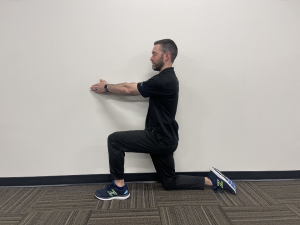
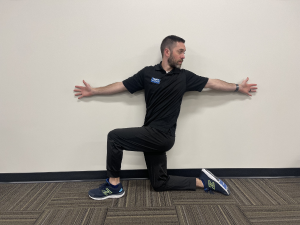
Forearm – Prayer and Reverse Prayer
Touch your palms together in front of your chest. Now lower your hands until your wrists are at a 90-degree angle. Repeat 10-15 times. For the opposite movement, start with the backs of your hands touching each other against your chest, but from a lower position. Now raise your hands until your wrists are at a 90-degree angle again.
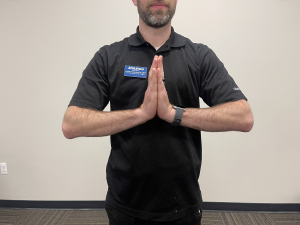
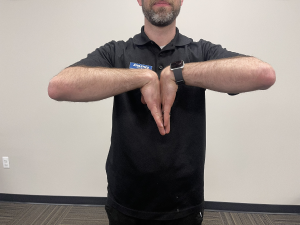
Back – Side Bend Child’s Pose
Kneel down with your hips as low as possible as close to your heels as possible. Straighten your hands, then arch to the side. Hold this position for 45-60 seconds, then walk back to the starting point. Repeat on the other side.
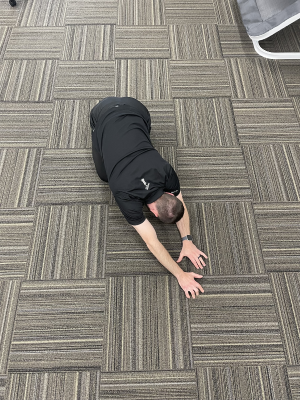
Glutes – Runner’s Lunge
Start in a high plank position with your left foot outside your left hand. If you can’t extend your leg that far, aim further out, making sure to land on the heel of your left foot. Then keeping your lower body steady, rotate your left hand up toward the ceiling, pause, and return. Repeat this movement 5-10 times, then finish on the other side.
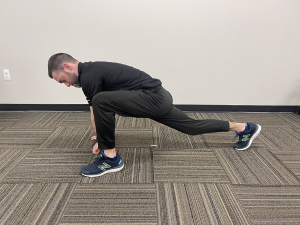
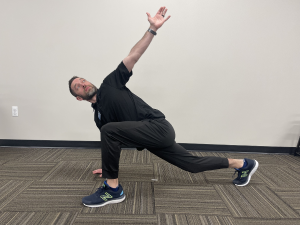
-
slow start to season
Even with strength, flexibility and a practice swing during preseason, your body won’t get used to the same amount of golf balls it might be able to handle in the spring in the middle of summer. You should stick to 9 holes the first few times you play golf this season. Jumping straight to a full 18 holes or more could result in an early-season overuse injury. Instead, focus on the first nine holes of the season to assess any soreness. If your shoulders are sore after playing 9 holes, focus on strength and flexibility the next week. Reassess next week to see if your hard work has paid off – less shoulder pain.
-
warm up before range or first tee
Walking straight from your car to the first tee and swinging with the driver sounds like a bad idea. However, many golfers take the same approach, especially if they are running late on league night. Even if you only have five minutes, warm up before the first hole to prevent injury. Like any sport, golf requires a targeted warm-up for optimal performance and to prevent injury. The main goal of a warm-up is to increase your body temperature (thus increasing the warmth of your muscles) and to allow your joints to gradually move through a fuller range of motion. Turn your shoulders, do some leg swings, and turn your torso side to side. Doing these three actions 5-10 times each time can be considered the least.
-
wear the right shoes
Golf spikes are designed to keep your feet on the ground as you swing. This is especially important during the follow-up phase, when there is a lot of rotational force on the body. When you’re new to golf, you might think that normal sneakers or running shoes will suffice. However, poor stance during follow-ups can cause your feet to slip. This slip, if slight, can strain your ankle. More serious missteps can pull on your hips and back, causing more serious muscle strains. Buying the right footwear is a simple preventive measure.
-
stay hydrated and wear sunscreen
Dehydrated muscles are less elastic and therefore more prone to strain.According to the CDC, when golfing in the heat, aim to drink 24-32 ounces of water per hour1. Sorry, beer and liquor do not count toward this goal. Alcohol is a diuretic that flushes water out of the body. Drinking beer on the golf course on a hot day can speed up the dehydration process. Think of water as the lubricant of your swing, as it prevents excessive wear. The same concept applies to sunscreen use. A sunburned patch of skin is less flexible. This can result in less range in your backswing, or poor deceleration in your swing. Wear sunscreen on the court!
-
Address pain early with a free assessment
Athletico offers free evaluations, as well as many skilled physical therapists who specialize in golf-specific rehabilitation. Your physical therapist can tell you which key parts of your body or which phases of your golf swing may be making you vulnerable to injury. From there, the two of you can create a plan to address these issues before wasting time on lessons! Free assessments are available in-clinic or virtually through our telehealth platform.
Request a free evaluation
*Beneficiaries of programs such as Medicare, Medicaid, Tricare, VHA, and other federally funded programs are not eligible for free evaluations per federal guidelines.
The Athletico Blog is an educational resource written by Athletico staff. Athletico bloggers are licensed professionals who abide by the codes of ethics established by their respective professional associations. The content published in blog posts represents the opinion of the author alone, based on his expertise and experience. The content presented in this blog is for informational purposes only and does not constitute medical advice and should not be relied upon in making personal health decisions.
refer to:
1. https://www.cdc.gov/niosh/mining/userfiles/works/pdfs/2017-126.pdf
